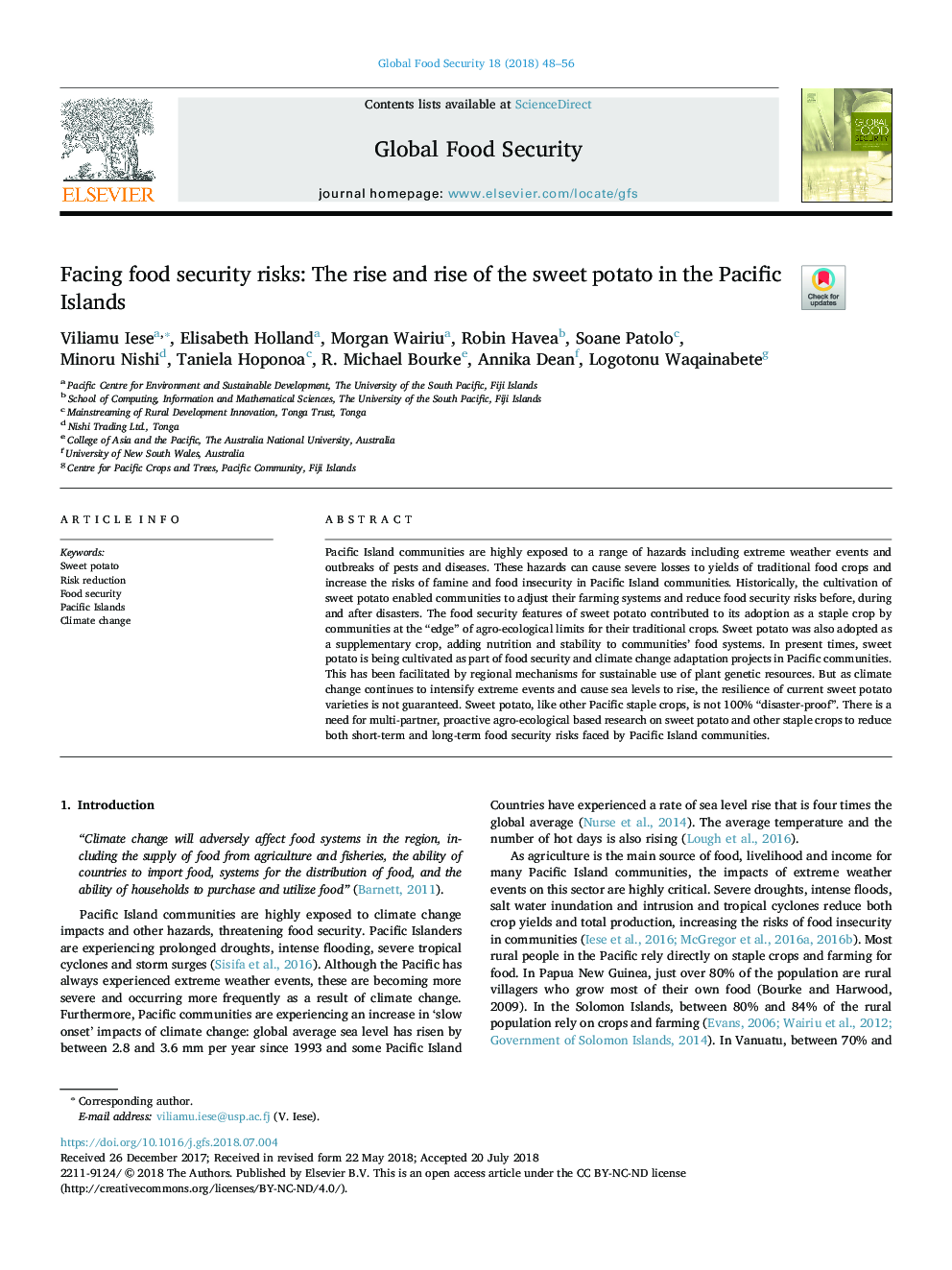| Article ID | Journal | Published Year | Pages | File Type |
|---|---|---|---|---|
| 7454439 | Global Food Security | 2018 | 9 Pages |
Abstract
Pacific Island communities are highly exposed to a range of hazards including extreme weather events and outbreaks of pests and diseases. These hazards can cause severe losses to yields of traditional food crops and increase the risks of famine and food insecurity in Pacific Island communities. Historically, the cultivation of sweet potato enabled communities to adjust their farming systems and reduce food security risks before, during and after disasters. The food security features of sweet potato contributed to its adoption as a staple crop by communities at the “edge” of agro-ecological limits for their traditional crops. Sweet potato was also adopted as a supplementary crop, adding nutrition and stability to communities' food systems. In present times, sweet potato is being cultivated as part of food security and climate change adaptation projects in Pacific communities. This has been facilitated by regional mechanisms for sustainable use of plant genetic resources. But as climate change continues to intensify extreme events and cause sea levels to rise, the resilience of current sweet potato varieties is not guaranteed. Sweet potato, like other Pacific staple crops, is not 100% “disaster-proof”. There is a need for multi-partner, proactive agro-ecological based research on sweet potato and other staple crops to reduce both short-term and long-term food security risks faced by Pacific Island communities.
Related Topics
Life Sciences
Agricultural and Biological Sciences
Agronomy and Crop Science
Authors
Viliamu Iese, Elisabeth Holland, Morgan Wairiu, Robin Havea, Soane Patolo, Minoru Nishi, Taniela Hoponoa, R. Michael Bourke, Annika Dean, Logotonu Waqainabete,
